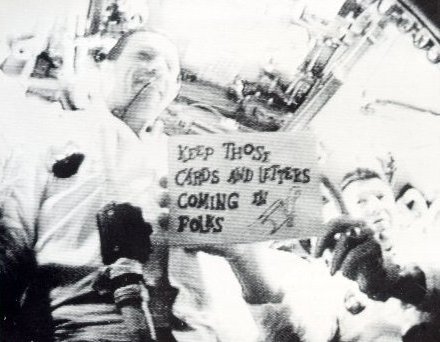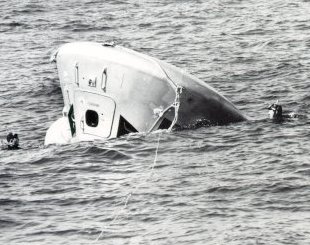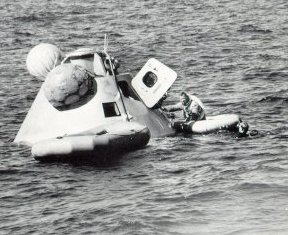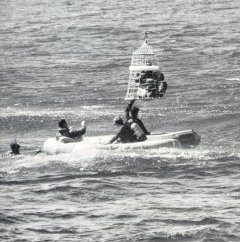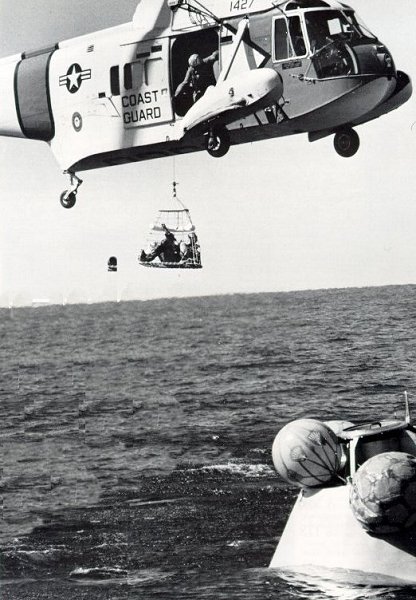|
"Stable two", an engineering euphemism for
upside-down, was one of the ways that the command
module could float and this was the way that
Apollo 7 splashed down. The astronauts
hung from their restraining belts for a few
minutes until three righting bags were inflated to
flip the spacecraft. The photo sequence above
and below, not the actual Apollo 7 landing,
shows a training session, one of many constantly
held to drill recovery teams and astronauts.
Not used in this exercise was the flotation collar,
normally fixed around the command module,
that provided insurance against swamping from
water taken aboard through the open hatch.
|
















